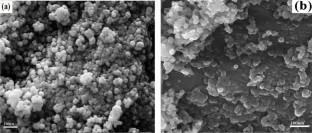International Journal of Material Forming ( IF 2.4 ) Pub Date : 2023-07-31 , DOI: 10.1007/s12289-023-01777-w Saeed Baazamat , Ehsan Borhani , Mohammad Tajally

|
In this study, microstructure, recrystallization texture, and mechanical properties of Al/WO3/SiC hybrid nanocomposite was investigated by electron backscatter diffraction (EBSD), analysis of orientation distribution function (ODF), and uniaxial tensile test during accumulative roll bonding (ARB) process. Microstructural observations show that the recrystallized grains are elongated in the rolling direction (RD) due to the Zener-pinning of nanoparticles at high angle grain boundaries and therefore growth is inhibited in the normal direction (ND) during the ARB process. The ODF investigation confirmed that after 5 cycles of ARB process, recrystallization is associated with nucleation of Goss, Q, and P components. When the number of ARB cycle was increased, Goss and Q recrystallization textures were eliminated, but on the other hand, the P, B and B* texture components were strongly developed. The ND-Cube and RT-Goss recrystallization texture is also formed with low intensity at the last stages. Also, the A and A* shear textures which formed in the fifth cycle, shifted towards the Dillamor and Cu textures with increasing the number of ARB cycles. Furthermore, the samples were heated using DSC under Argon atmosphere with four different heating rates. The Kissinger, Ozawa, Boswell, and Starink methods were used to determine the recrystallization kinetics. It can be seen that recrystallization temperature and thereby activation energy (Ea) decreases with increasing the number of ARB cycles. Furthermore, the tensile strengths and elongation of the hybrid nanocomposite increased and decreased by increasing the number of ARB cycle and reached to a maximum value of 204.5Mpa and 6.1% at the end of 9th cycle, respectively.
中文翻译:

Al/WO3/SiC杂化纳米复合材料累积辊压接合(ARB)过程中的微观结构、再结晶织构和力学性能
在这项研究中,Al/WO 3的微观结构、再结晶织构和机械性能通过电子背散射衍射(EBSD)、取向分布函数(ODF)分析和累积辊压粘合(ARB)过程中的单轴拉伸试验对/SiC杂化纳米复合材料进行了研究。微观结构观察表明,由于纳米颗粒在大角度晶界处的齐纳钉扎,再结晶晶粒在轧制方向(RD)上被拉长,因此在ARB过程中在法线方向(ND)上的生长受到抑制。ODF 调查证实,经过 5 个 ARB 工艺循环后,再结晶与 Goss、Q 和 P 组分的成核有关。当ARB循环次数增加时,Goss和Q再结晶织构被消除,但另一方面,P、B和B*织构成分却强烈发展。最后阶段还形成了低强度的ND-Cube和RT-Goss再结晶织构。另外,A 和 A*在第五个循环中形成的剪切织构,随着 ARB 循环次数的增加而转向 Dillamor 和 Cu 织构。此外,使用 DSC 在氩气氛下以四种不同的加热速率加热样品。Kissinger、Ozawa、Boswell 和 Starink 方法用于确定再结晶动力学。可以看出,再结晶温度和活化能(E a )随着ARB循环次数的增加而降低。此外,杂化纳米复合材料的拉伸强度和伸长率随着ARB循环次数的增加而增加和减少,并在第9次循环结束时分别达到最大值204.5Mpa和6.1%。



























 京公网安备 11010802027423号
京公网安备 11010802027423号